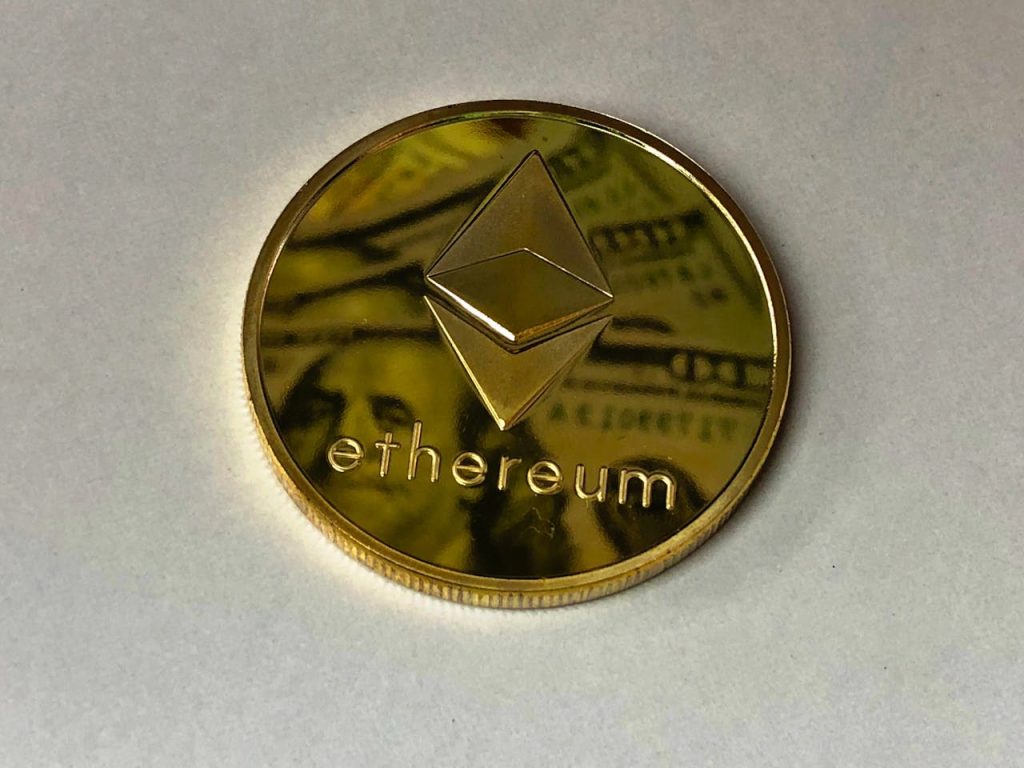Cryptocurrencies have surged from niche digital experiments to global financial assets, with Bitcoin (BTC) leading as the undisputed pioneer. However, more coins have appeared in the industry over time, with Ethereum (ETH) gaining the title of the second cryptocurrency following Bitcoin. Due to its innovations, ETH is now the main competitor of Bitcoin. So, in the article, we’re going to answer the question: «Is Ethereum a good investment?».

Ethereum Evolution: How It Rose from Simple Altcoin to the Main Bitcoin Competitor
Ethereum’s value extends far beyond its role as a tradable digital asset. Crypto enthusiasts and developers view it as the backbone of Web3 – a decentralized Internet where trustless applications redefine industries. Unlike Bitcoin, which prioritizes scarcity and security, Ethereum’s intrinsic worth lies in its programmable blockchain, which enables smart contracts, decentralized finance (DeFi), non-fungible tokens (NFTs), and even decentralized autonomous organizations (DAOs). New innovations convert ETH from an ordinary token into a usable resource which offers owners ownership rights similar to stakeholder status in a worldwide economy without restrictions.
Users need to comprehend which events influence changes in crypto investments to understand why cryptocurrency is a valuable investment opportunity. ETHerano experienced larger price gains than Bitcoin in 2024. ETH now serves as both an inflation shield and technical protocol standard which drives its contemporary market value. Bitcoin’s rise to all-time highs in early 2024 (exceeding $70,000) has revived bullish sentiment in crypto markets. Historically, Ethereum’s price has shown a 0.8+ correlation with Bitcoin, but its rally in 2024 (~70% YTD vs. ~55% for Bitcoin) highlights investors’ growing recognition of its individual value drivers.
The US presidential election creates monumental effects on both Ethereum and all sectors within the crypto market. The independent candidate Robert F. Kennedy Jr along with Republican representative Vivek Ramaswamy promote clear regulatory guidelines that include tax relief for cryptocurrency deals and CBDC opposition. Fast adoption of institutions occurs when such positions are taken. Candidate groups determined to protect consumers are working to strengthen securities regulations and protect buyers.
Overview of Ethereum: Features & Use Cases
Ethereum is the world’s largest altcoin and the second-largest cryptocurrency by market capitalization (~$400 billion as of 2024), trailing only Bitcoin. Launched in 2015 by Vitalik Buterin, Ethereum revolutionized blockchain technology by introducing programmability – a feature that transformed it from a simple payment network into a global, decentralized computing platform. Unlike Bitcoin, which focuses on peer-to-peer value transfer, Ethereum’s blockchain is designed to execute smart contracts (self-operating agreements) and host decentralized applications (dApps).
5 Key Use Cases of Ethereum
To answer the question «Should I invest in Ethereum now?», you should consider the most common use cases and users’ benefits:
- Decentralized Finance (DeFi). Ethereum hosts ~60% of all DeFi activity. Users can borrow and lend assets without banks (e.g., Compound, MakerDAO). Coin holders can trade tokens peer-to-peer (e.g., Uniswap, SushiSwap) and earn yield via liquidity mining or staking.
- Decentralized Autonomous Organizations (DAOs). These are member-owned communities governed by smart contracts. Examples:
- MakerDAO: Manages the DAI stablecoin through decentralized governance.
- Uniswap DAO: Allows token holders to vote on protocol upgrades.
- Smart Contracts. Ethereum’s programmable contracts support:
- supply chain management for transparent tracking of goods.
- insurance for automated payouts for flight delays (e.g., Etherisc).
- gaming for play-to-earn economies (e.g., Axie Infinity).
- Non-Fungible Tokens (NFTs). Ethereum pioneered NFTs – unique digital assets representing ownership of art, music, or virtual real estate. Key platforms are:
- OpenSea is the largest NFT marketplace.
- Art Blocks is an algorithmic generative art platform.
- Decentralized Apps (dApps). Over 4,500 dApps run on ETH, spanning:
- social media: decentralized platforms like Lens Protocol.
- identity verification: self-sovereign IDs (e.g., ENS domains).
- prediction markets: platforms like Augur for event betting.
Thus, ETH exchanges are common for modern crypto owners. Ethereum comes as a popular system for money transfers and exchanges. If you search for an instant cryptocurrency exchange, Xgram is the best choice. Security, fast processing, and favorable rates are guaranteed.
Understanding Ethereum’s Mechanism
Proof-of-Stake (PoS) serves as the core change when compared to Proof-of-Work (PoW). The Merge upgrade transformed Ethereum into a Proof-of-Stake (PoS) system and it substituted Bitcoin’s energy-draining Proof-of-Work (PoW) mechanism in 2022. Transactions through PoW require miners to find complex cryptographic solutions that burns substantial energy since Ethereum consumed ~112 TWh/year prior to The Merge just like the electricity consumption in the Netherlands. Jumping from mine to validator is how the system works since validators lock away ETH funds as security to establish new blocks. The transformation to PoS reduced the energy requirements of Ethereum by such an extensive 99.95% making it consistent with sustainable global targets. Validating transactions on Ethereum generates rewards today equivalent to about 4% Annual Percentage Rate (APR) yet participation violation could result in ETH stake loss («slashing»). This creates a self-policing network.
To become a validator, users must stake 32 ETH (or join staking pools like Lido). Over 30% of ETH’s supply (~36 million ETH worth ~$115 billion) is staked, securing the network and reducing liquid supply.
Future of Ethereum
Finally, to conclude if grayscale ethereum trust is a good investment, we should take a look at the future perspective. Ethereum is increasingly likened to «digital oil» – a commodity critical to powering Web3. However, its evolving tokenomics and utility position it to rival Bitcoin as a store of value (SoV):
- Scarcity via EIP-1559. Ethereum’s 2021 upgrade introduced a fee-burning mechanism, destroying a portion of transaction fees. During network congestion, more ETH is burned than issued, making ETH deflationary. For example, over 4 million ETH (~$12 billion) has been burned since 2021.
- Yield-generating asset. Staking transforms ETH into a productive asset, offering ~4% APR (vs. Bitcoin’s 0%). Institutions like BlackRock are exploring ETH staking ETFs, framing it as a bond-like yield in a digital economy.
- Institutional adoption. Regulatory clarity (e.g., CFTC classifying ETH as a commodity) and spot ETF approvals could mirror Bitcoin’s 2024 ETF-driven rally, attracting conservative investors seeking «safe» crypto exposure.
However, the cryptocurrency is expected to face such challenges as scalability, regulatory risks, and competition.
While Bitcoin remains crypto’s «safe haven», Ethereum is its growth engine. For investors, ETH offers asymmetric upside: if Web3 succeeds, Ethereum’s ecosystem could command valuations rivaling tech giants like Amazon or Google. Even in a bear case, its established utility as a global settlement layer ensures enduring relevance.
Answering the question «Is Ethereum a better investment than Bitcoin?», confidence is justified by the following reasons. Institutional validation because BlackRock, Fidelity, and Visa are betting on Ethereum’s infrastructure. The ecosystem features developer dominance since it has 4x more devs than any other blockchain. After all, regulatory tailwinds contribute to its development. This fact is proven by statistics: Bipartisan U.S. crypto bills (e.g., FIT21) increasingly treat ETH as a commodity, not a security.
Ethereum’s potential to outperform Bitcoin hinges on the adoption of its ecosystem, not just price speculation. If DeFi becomes a mainstream alternative to Wall Street, NFTs redefine digital ownership, and DAOs disrupt corporate governance, ETH’s value could transcend Bitcoin’s scarcity-driven model. While Bitcoin is going down, Ethereum is expected to be a safe and worthy investment in the long term. While «flippening» isn’t guaranteed, Ethereum’s fundamentals make it the best candidate to challenge Bitcoin’s throne. Thus, it’s the right time to buy ETH.
Tradersdna is a leading digital and social media platform for traders and investors. Tradersdna offers premiere resources for trading and investing education, digital resources for personal finance, market analysis and free trading guides. More about TradersDNA Features: What Does It Take to Become an Aggressive Trader? | Everything You Need to Know About White Label Trading Software | Advantages of Automated Forex Trading








